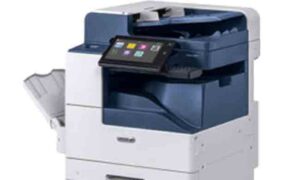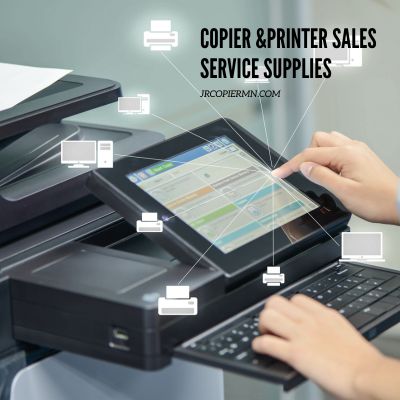Printer Repair
In a digital world, printers remain vital for professional and personal tasks. However, when issues arise, understanding the intricacies of printer repair becomes essential. This guide will delve into the fundamentals of printer components, common problems, do-it-yourself troubleshooting, and when to seek professional intervention. It will also provide insights into regular maintenance. Join us in this journey to enhance your technical knowledge, solve printer-related issues, and foster a sense of belonging within the user community.

Understanding Printer Components
In the realm of printer repair, a clear comprehension of printer components, such as the print head and toner cartridge, is fundamentally crucial. The print head is the heart of the printer. It is responsible for transferring the digital information into tangible print. Any disruption in its operation can lead to poor quality print or, in worst cases, no print at all. Regular cleaning of the print head, particularly in inkjet printers, can prevent blockages and maintain the quality of print.
The toner cartridge is another vital component. It contains the toner powder, which forms the text and images on the paper during the print process. An improperly installed or faulty toner cartridge can result in smudged prints, streaks, or entirely blank pages. Thus, careful handling and regular replacement are essential.
This technical knowledge aids in troubleshooting and effectively resolving printer issues. It allows for a proactive approach to maintenance, reducing the likelihood of severe printer malfunctions. As part of this community, understanding these nuances not only enhances your problem-solving capacity but also reinforces the sense of belonging in the world of printer repair.
Common Printer Problems
Over time, even with a thorough understanding of printer components and proactive maintenance, certain common printer problems may still arise that require expert attention. These challenges can range from simple paper jams to more complex issues such as inconsistent print quality or full-scale hardware malfunctions.
Paper jams, for instance, are often caused by overfilling the paper tray or using paper that’s damaged or not appropriate for the printer model. In this case, it’s crucial to remove the jammed paper carefully to avoid causing further damage to the printer’s internal mechanisms.
On the other hand, inconsistent print quality might be due to several factors. These include low ink or toner levels, out-of-date drivers, or misaligned print heads. Regularly checking ink levels, updating drivers and aligning print heads can solve most of these issues.
In the event of a hardware malfunction, expert intervention is generally required. Such issues might be indicative of a serious internal problem or a component nearing the end of its lifespan. It’s crucial to consult with a professional technician to diagnose and rectify the problem accurately, thus ensuring the printer’s longevity and optimal performance.
DIY Troubleshooting Techniques
Several practical DIY troubleshooting techniques can be employed by users to diagnose and resolve common printer issues. These measures can save you time and help you avoid the cost of professional repair services.
To begin with, it’s crucial to identify the problem. Once you have a clear understanding of the issue, the following steps can be taken:
- Check the Printer Connection: Ensure that the printer is correctly connected to your computer or network. A poor connection could be the cause of many printing issues.
- Update the Printer Driver: A faulty or outdated driver can lead to printing problems. Check the manufacturer’s website for the latest driver updates.
- Clean the Printer Heads: Over time, ink can accumulate and clog the printer heads. Regular cleaning can prevent this issue and improve print quality.
- Check for Paper Jams: Paper jams are a common issue that can be resolved by carefully removing the jammed paper from the printer.
- Replace the Ink Cartridge: If your printer is not printing correctly or the ink is running low, it may be time to replace the cartridge.
Mastering these techniques can empower you to take control of your printer’s maintenance, fostering a sense of belonging in the DIY community.
When to Seek Professional Help
Despite your proficiency in DIY troubleshooting techniques, there comes a point when the complexity of printer issues necessitates the intervention of professional technicians. This juncture is often reached when you encounter persistent errors that your skillset and tools cannot rectify. One such situation is when the printer persistently displays an error code that isn’t listed in the user manual, or when the same problem recurs despite following all recommended troubleshooting steps.
Another instance is when physical damage is evident. Broken parts, unusual sounds, or visible damage within the printer are clear signs that a professional repair is required. The internal mechanisms of printers are intricate and delicate; a misstep during DIY repair could exacerbate the problem.
If you’ve replaced key components such as the cartridge or fuser and the printer still fails to function properly, it’s time to seek professional help. Professionals have specialized diagnostic tools to identify underlying issues that may not be apparent to the average user.
Maintaining Your Printer Regularly
In the course of regular printer usage, adopting a consistent maintenance routine is crucial to ensure its optimal performance and longevity. Just as a vehicle requires routine servicing, your printer relies on regular attention to continue operating effectively.
Here are some key steps to take in maintaining your printer regularly:
- Clean the inside: Dust and debris can accumulate inside the printer, causing jams and other issues. A soft cloth or compressed air canister can be effective in cleaning.
- Replace cartridges promptly: Waiting until ink or toner cartridges are completely empty can cause damage. Monitor levels and replace when low.
- Regularly update drivers: Manufacturers often release updates to printer drivers. Ensuring your printer is using the latest driver can improve performance.
- Use high-quality paper: Poor quality paper may leave residue in the printer, leading to potential problems. Always opt for high-quality paper.
- Turn off the printer when not in use: Leaving the printer on can cause unnecessary wear and tear. Turn it off when it’s not in use to prolong its lifespan.
Maintaining your printer is an act of stewardship that will ensure a long, productive life for your device.
